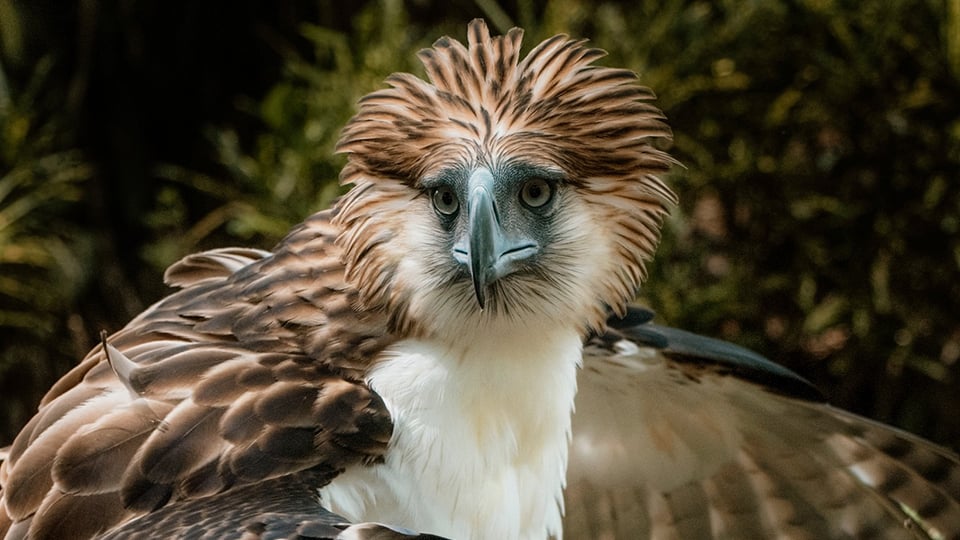We are thrilled to announce that the Philippine Eagle cam is online here: https://www.philippineeaglefoundation.org/transfer-breeding-eagles-now and here: https://www.raptorresource.org/birdcams/philippine-eagle-cam/ and here! https://explore.org/livecams/raptor-resource-project/philippine-eagles
The Raptor Resource Project has partnered with the Philippine Eagle Foundation and Explore.org to bring bird lovers a live 24×7 stream of Ariela and MVP, a mated pair of Philippine Eagles who live at the National Bird Breeding Sanctuary (NBBS) in Barangay Eden, in the Philippines. The Philippine Eagle is one of the largest and most powerful eagles in the world. Unfortunately, it is also among the world’s most critically endangered species, with just 90-250 pairs of eagles remaining in the wild. Ariel and MVP’s home is off-limits to tourists, but we invite everyone to visit them online and help collect observations about their behavior, including courtship, copulation, and – talons crossed! – egg and offspring care.
About the Eagles
 Photo of a Philippine Eagle at the Philippine Eagle Center by Shemlongakit
Photo of a Philippine Eagle at the Philippine Eagle Center by Shemlongakit
Philippine Eagles have blue eyes, large deep bills, and long brown nape feathers that form a crest when erect and flow somewhat like like hair when relaxed. They are a little over three feet long from beak to tail tip, weigh between 10 and 17 pounds, and have a wingspan of around seven feet. Ariela has a damaged foot and is missing a talon: MVP has a fractured wing and is unable to fly. The pair have been mates since 2019 and first nested successfully in 2021.
Ariela and MVP usually begin courtship activities in August or September. If they are successful, Ariela will lay an oval white egg between October and December. Their single chick will hatch roughly 62 days later and fledge between 23 and 24 weeks of age; in the wild, fledglings remain dependent on their parents for another year or more. Wild Philippine Eagles feed on primarily on flying lemurs, palm civets, and monkeys, although they take a wide variety of prey including rats, flying squirrels, monitor lizards, and birds.
Photo of a Philippine Eagle at the Philippine Eagle Center was taken by Shemlongakit.
 The Raptor Resource Project
The Raptor Resource Project The Raptor Resource Project
The Raptor Resource Project